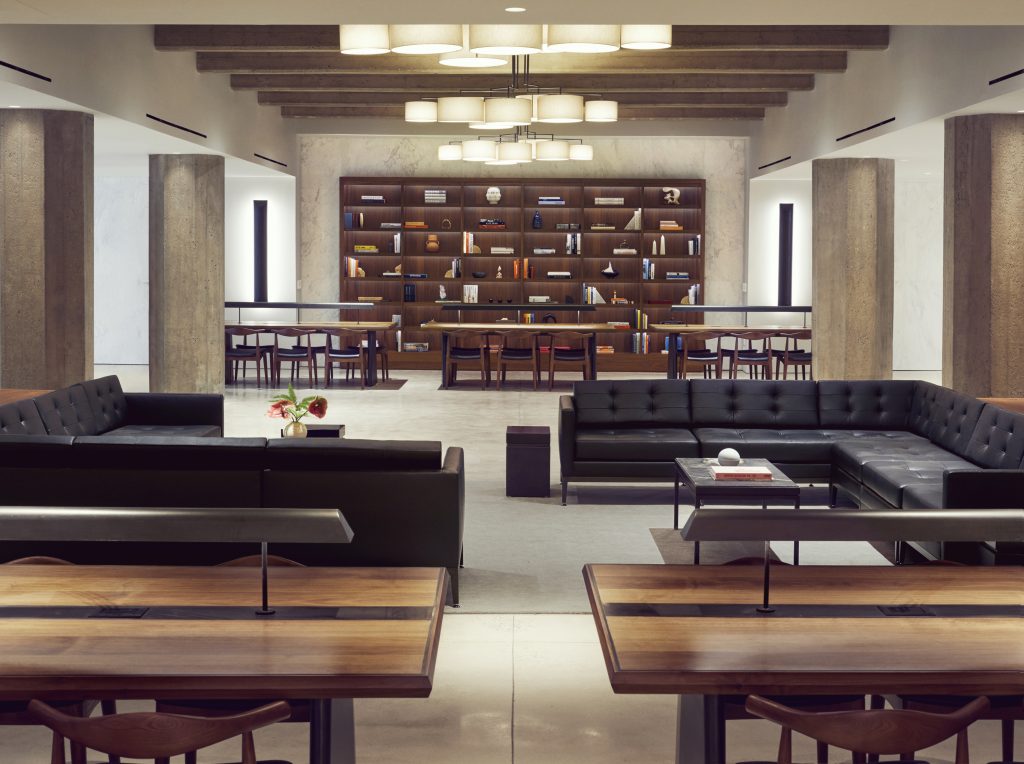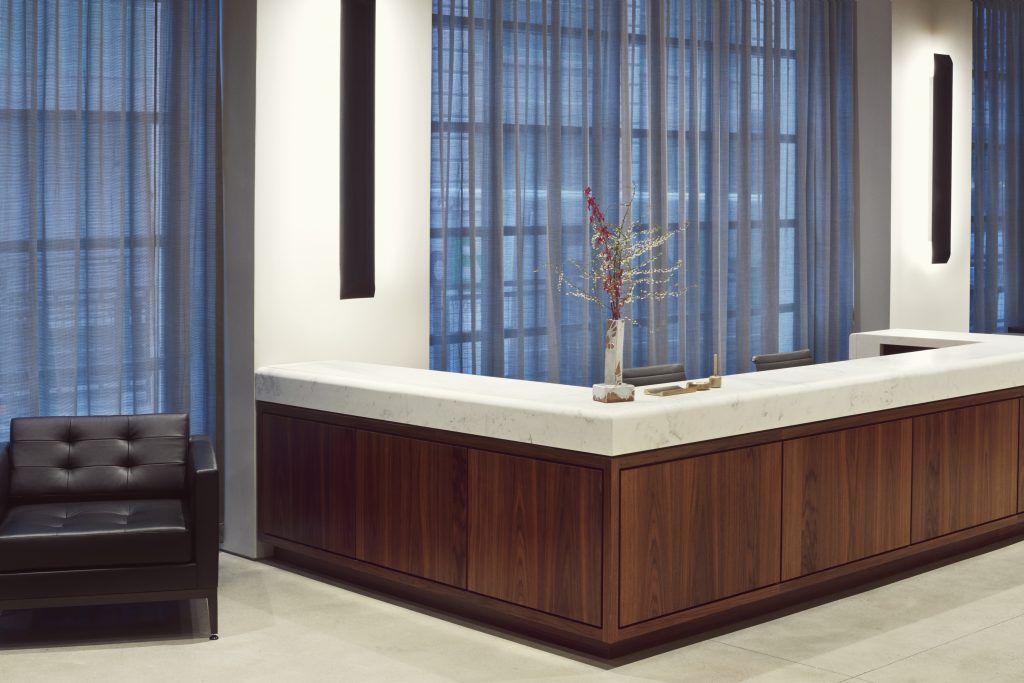Industry City’s High-Design Co-Working Space Camp David Adds 20,000 Square Feet
With a physical expansion comes a new fleet of partnerships, possibilities and amenities

Amidst the bustle within the six million square feet of mixed-use space at Brooklyn’s Industry City, Camp David quietly transforms the idea of co-working. Two years ago, the membership club welcomed thinkers, creatives and entrepreneurs—setting them in a calm, upscale environment of wood paneling, thick marble counters and Prouvé chairs. As Industry City grew—with a Japan Village, distillery row and the forthcoming Sahadi’s—the team behind Camp David waited patiently, at high occupancy, for their next phase. And now, they’ve commenced construction on 20,000 square feet and will welcome 240 additional members. It’s a move that demonstrates the high-design co-working space’s access to more room—and the fact that they’re listening to the people already calling it home.

This announcement follows the completion of another unique Camp David amenity. The thoughtfully-developed maker’s space is no ordinary crafts room. The textile corner carries tools necessary to make samples locally. A continued partnership with the CFDA offers the winner of the Elaine Gold Launch Pad desk and studio space here. In the same room, a photo suite with light equipment has been sound treated for video work. It’s an environment far different than the one several floors above where 200 desks form units that house everything from Santiago Calatrava‘s US office to a criminal justice reform start-up.

The maker’s space and fourth floor expansion continue the mission of Mazdack Rassi and Erez Shternlicht, Camp David’s founders and two of the partners that helped bring Meatpacking’s Milk Studios to global recognition. “We started thinking about what’s the differentiation between here and other industrial spaces,” Rassi shares with CH. “How do we build something unique? I feel like we went through a raw, industrial phase a long time ago, so how do you take an industrial space and make it very finished using signature materiality that has stood the test of time?” Rassi and Shternlicht began to hone in on ’50s and ’60s governmental buildings—a period where the Post Office was the most beautiful building in town. “There was a golden age to this design,” he adds, “where materials needed to be solid and long-lasting.”

“The idea is that it will outlast us all,” he continues. From the classic facade to the nurturing warmth of the lighting design, there’s a direct, simple beauty to Camp David. Rassi says their direction stemmed from a sentiment voiced by Shternlicht who used to say, “I want to spend a lot of time and energy on the door handles.” He was motivated by a memory of American cars from the ’50s and ’60s. “There was a certain sound when you shut the door,” Rassi says. “It was substantial. There was gravity and it doesn’t exist anymore.”

At the coffee bar on the ground floor, there’s much to ponder. First, Camp David references the Presidential retreat and whether or not one has ever seen the Maryland escape, you can only hope it offers the same amount of peace and quiet as the co-working space. Second, at the start of the work day, as everyone rushes into the city, people reverse commute to Camp David and in turn are rewarded with space. “We wanted to use the space we have as an advantage,” Rassi says. “Ultimately, it’s about building a premium product that you couldn’t get in the city.

At the same time, Camp David could not exist without the 16-building Industry City complex. “We wanted to be the jewel of Industry City,” says Rassi, acknowledging that “We also know that we could not win here on our own. We could only win with Industry City. Everything you see at Industry City is a benefit and resource for our members. At the end of the day, there’s nothing around us like this.” They’re committed to the local community beyond Industry City, too—and remarkably many of their tenants are local. And yet, with this balance of polished presentation, accessible rates and the ability to expand their offerings based on the needs of their members, they’re succeeding at differentiating themselves from Industry City, and the rest of NYC.
Images by Thomas Slack courtesy of Camp David












